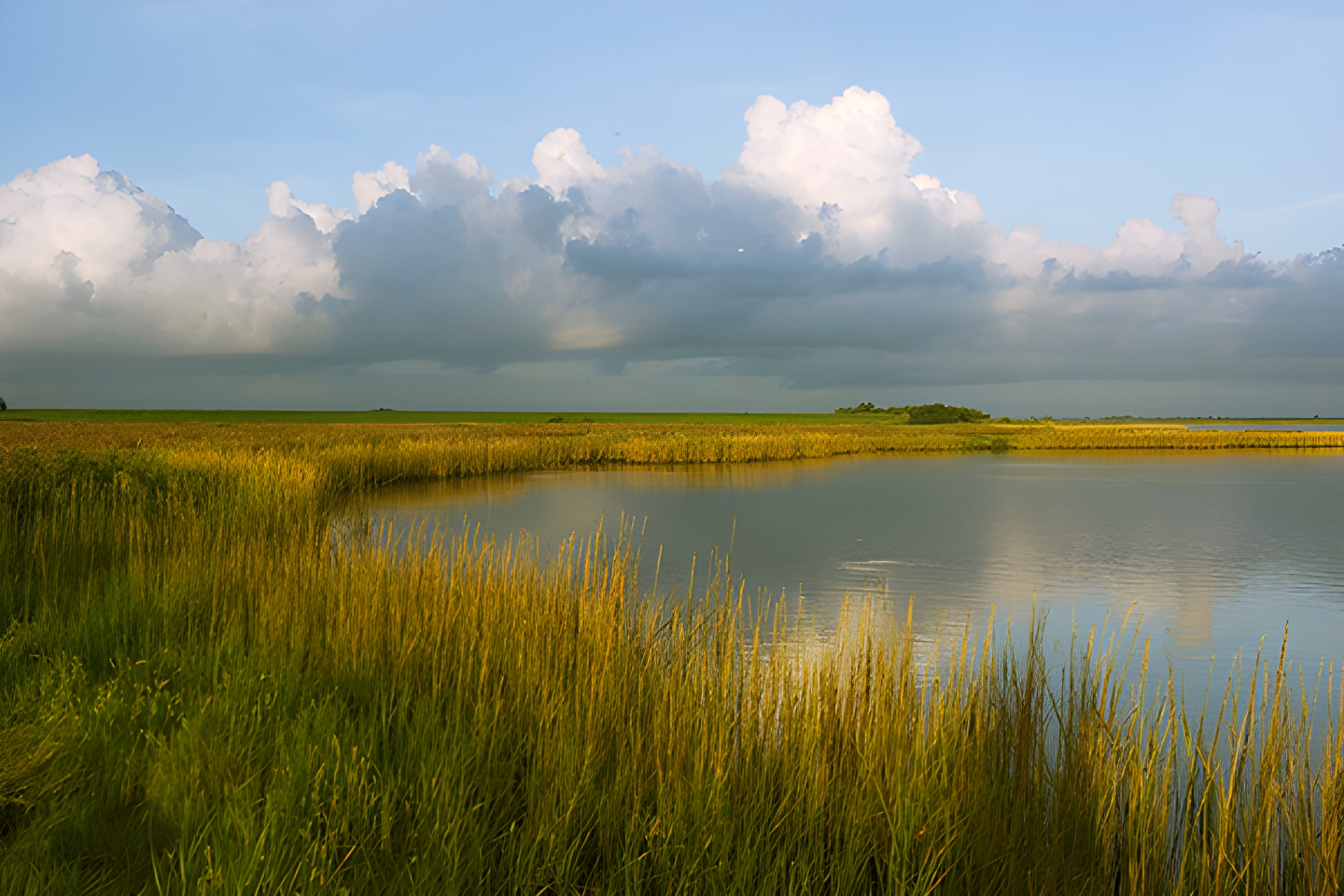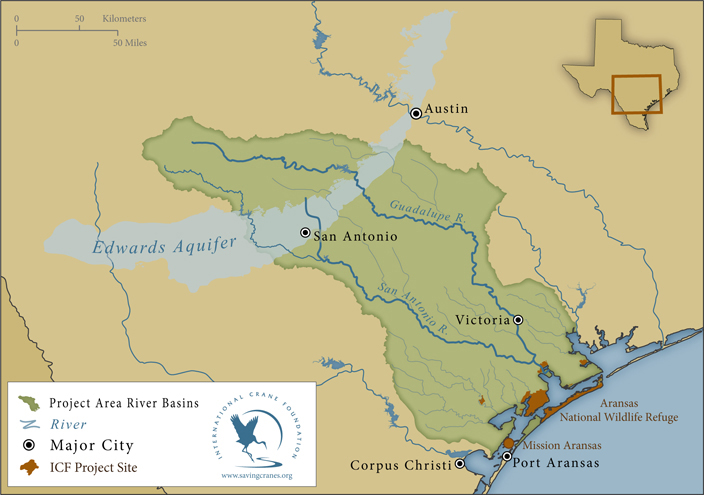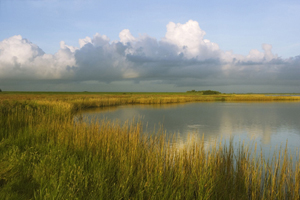
Texas Program
The last naturally occurring Whooping Crane population migrates over 2,500 miles from their breeding grounds in western Canada to winter on the coastal wetlands in southeastern Texas. The survival of this critical population depends on securing freshwater from the Guadalupe River basin and conserving wetland habitats along the Texas Gulf Coast.

The Guadalupe and San Antonio Rivers supply freshwater to the central Texas coast, which is essential for the cranes and their main winter food source, blue crabs, but the river and wetlands are threatened by excessive upstream water use. These same waters also sustain a wealth of economic activity along the Texas coast, including commercial and sport fisheries, shell-fisheries, and recreation.
We are working with diverse partners in Texas, including coastal municipalities, businesses, and community groups, to protect the fragile coastal ecosystem, its precious wildlife, and the vital coastal economy. Our research includes studies that increase our understanding of how water management affects the health of Whooping Crane habitats during crisis periods. We are also continuing to develop new outreach strategies to empower water users throughout the Guadalupe basin while advocating wise water management strategies that meet the needs of downstream businesses, communities, and healthier coastal ecosystems.
LEARN MORE
On their wintering grounds along the Gulf Coast of Texas, Whooping Cranes feed almost exclusively on blue crabs. The coastal marshes provide excellent habitat for the crabs if salinity levels remain moderate, which is determined primarily by the amount of freshwater flowing into the coastal waters from the Guadalupe River basin.

When freshwater is reduced, due to drought or use of the river’s water upstream, fewer crabs are available for Whooping Cranes. In such cases, the cranes weaken, resulting in higher mortality on their wintering grounds and fewer chicks on their breeding grounds in Canada the following spring. How will this affect the future of this endangered species?